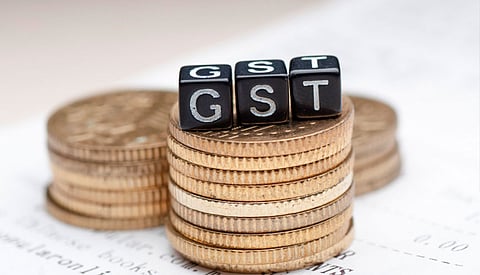
🔧 We’re Under Maintenance
We’ll be back shortly. Thank you for your patience.
We’ll be back shortly. Thank you for your patience.

India's GST system is too complicated and has far too many slabs. A simpler regime with fewer, lower rates will improve compliance, lower prices, increase consumption demand and, most importantly, not cost the government an arm and a leg to implement.
There has been a spate of positive economic data emanating from different sectors of the economy. Among the most heartening is the indication that factory output last month expanded at the fastest pace since 2010.
The IHS Markit Purchasing Managers' Index (PMI rose to a decadal high of 58.9 in October, up sharply from the figure of 56.8 recorded in September. This is the highest level it has attained since May 2010.
Have you read
The best of the Indian economy is yet to come
The resurgence of the Indian economy can give investors the ride of their lives
The worst may be over for the Indian economy
Welcome to India's emerging white-collar gig economy
Bet big and bet long in the Indian economy
Indian economy doomsday predictions are highly overstated
India's economy and fiscal position is set for a sharp rebound
Any reading of more than 50 indicates growth; any reading below that number points to a contraction. “Levels of new orders and output at Indian manufacturers continued to recover from the COVID-induced contractions seen earlier in the year,” Pollyanna De Lima, IHS Markit's Economics Associate Director told the media.
The hard numbers support this finding. GST collections in October were $14.5 billion, a 10 per cent improvement over the figure for the corresponding month last year. This is the first time it has crossed the $14-billion-a-month mark this financial year.
This is in line with anecdotal evidence from a range of sectors such as automobiles, mobile phones, white goods and others, all of which have announced record growth figures at the start of the current festive season.
“All this gives us hope that it (the recovery) is sustaining...,” Indian Finance Minister told ToI, a leading English daily.
This comes less than a fortnight after Reserve Bank of India (RBI) Governor Shaktikanta Das said India is on the cusp of a full-blown economic recovery.
However, some independent economists have cautioned that once the pent-up demand is satiated and the festive season spending peters out, this consumption bump flatten out - unless the government comes out with a well-designed stimulus package.
RBI's Consumer Confidence Survey for September says: “Households were, however, more confident for the year ahead: the future expectations index (at 115.9) improved for the second successive survey round... Consumers expect improvements in general economic situation, employment conditions and income scenario during the coming year; discretionary spending, however, is expected to remain low in the near future.”
Apart from providing a stimulus, which will entail additional government spending and an increase in the fiscal deficit, which is already running high, the government can boost demand, consumption and growth in the economy by lowering taxes, thus, making a range of goods and services cheaper.
It may, therefore, be time for the government to look at reforming the goods and service tax and rejigging and lowering its rates to make it simpler to administer and comply with.
The Laffer Curve is a theory developed by supply-side economist Arthur Laffer to show the relationship between tax rates and the amount of tax revenue collected by governments - sometimes cutting tax rates can increase total tax revenue.
India's GST regime has far too many slabs - 0 per cent, 5 per cent, 12 per cent, 18 per cent and 28 per cent. Then, petroleum products, alcoholic drinks and electricity do not come under the ambit of GST and are taxed separately by the state governments.
The multiplicity of rates and various exemptions create space for loopholes, mis-declaration in order to qualify for lower tax rates and room for disputes. Then, the peak rate of 28 per cent is far too high. And the taxes embedded in electricity tariffs and petroleum products get factored into the final prices of a range of unrelated products that increases the cost of doing business in India.
So, a central rate of 12 per cent for the vast majority of products, with a higher demerit rate for sin goods and luxury items and a merit rate for others, with no, or at worst, very few exceptions, should be the way forward.
And editorial in The Economic Times, India's leading financial daily, says: “All indirect taxes subsumed under GST are estimated to net about 10 per cent of GDP. The same amount of tax would be collected if every unit of non-agricultural value added were to bear GST at the rate of 11.5 per cent. A 12 per cent universal rate, with some lower rates and some higher, with some added cesses not eligible for input tax credit on sin goods thrown in, should fetch us the same level of indirect taxes and audit trails to a treasure trove of income that today escapes tax.”
Also, lower indirect taxes will be in line with - and take forward the philosophy behind - the Modi government's bold move last year to cut corporate tax rates for existing companies to 25 per cent and for new manufacturing companies to 17 per cent.
It will lower the cost of goods, increase tax buoyancy and help sustain the upbeat demand scenario that has led to an uptick in growth after months of a Covid-induced slowdown.